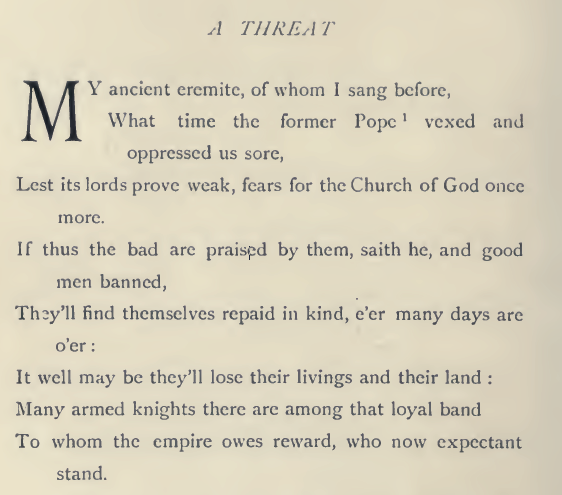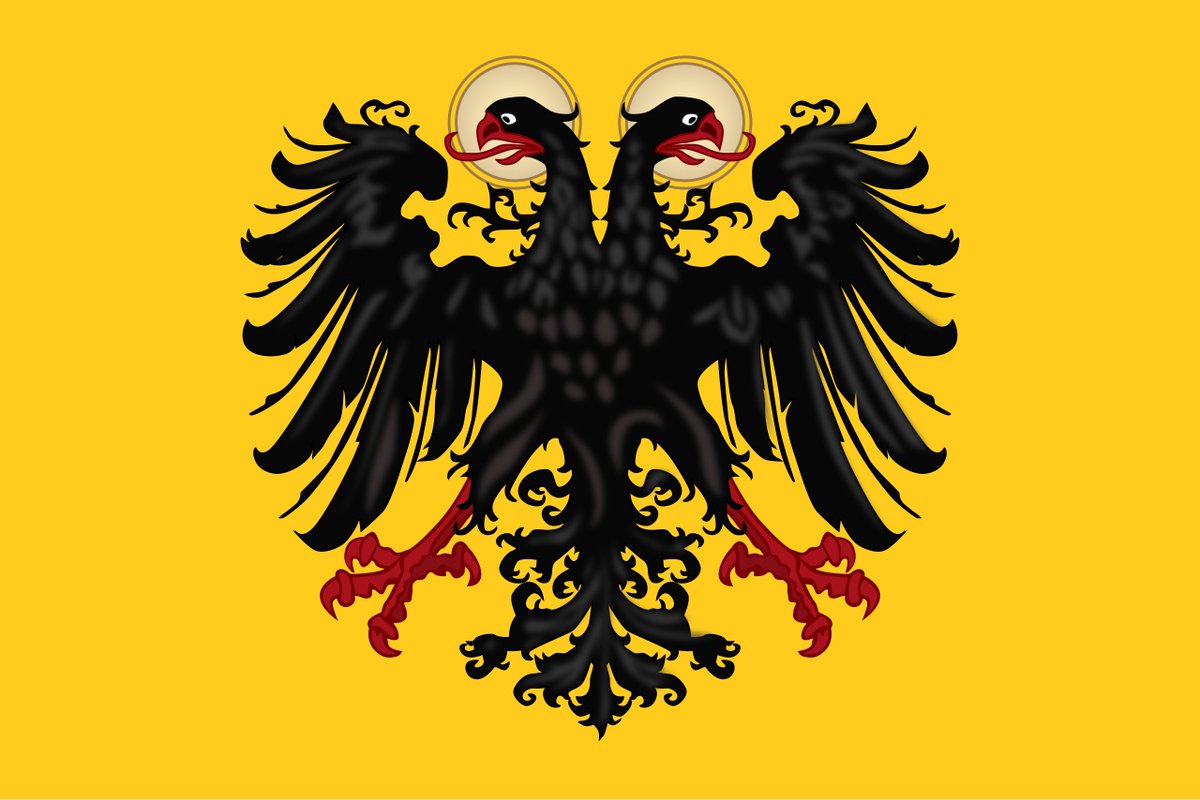The notorious German Minnesänger poet Walther von der Vogelweide (1170-1230) was an ardent supporter of the crusades (known for his crusader chant Palästinalied) and of the Holy Roman Empire. He wrote many political poems (Sprüche). I present some of his works here... 

His song Palästinalied is obviously the most famous and one of the rare Vogelweide's songs for which the melody survives. If you haven't heard it yet, you absolutely have to. It is sung from a perspective of a crusader who comes to the Holy Land.
But there are also many interesting political poems Vogelweide wrote. He supported the Holy Roman Empire in the struggle between emperor and the pope. This poem was made after Frederick II was excommunicated in 1227, urging his knights to remain steadfast and loyal to the Empire. 

Another very interesting poem I found in the 1896 book Selected Poems of Walter von der Vogelweide, lamenting the decline of the Empire. 

Vogelweide's poem dedicated to emperor Otto IV (ruled from 1209 to 1215), the only emperor from the Welf dynasty who was also excommunicated by the Pope Innocent III in 1210. He was deposed in 1215 following the defeat at the famous battle of Bouvines. 

• • •
Missing some Tweet in this thread? You can try to
force a refresh





































